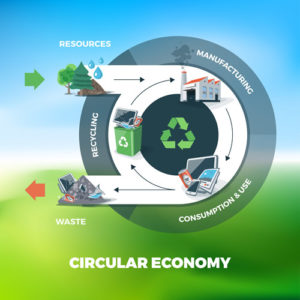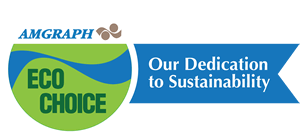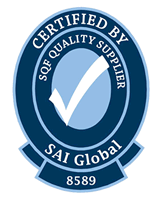 Eco-friendly packaging, whether biodegradable or compostable, is not just good for the planet. As the ranks of environmentally conscious consumers grow, adhering to production practices that foster sustainability is also good for business. By embracing a “cradle-to-cradle” mentality in all aspects of packaging production, companies can give themselves a distinct marketing advantage.
Eco-friendly packaging, whether biodegradable or compostable, is not just good for the planet. As the ranks of environmentally conscious consumers grow, adhering to production practices that foster sustainability is also good for business. By embracing a “cradle-to-cradle” mentality in all aspects of packaging production, companies can give themselves a distinct marketing advantage.
Goodbye cradle-to-grave, hello cradle-to-cradle
The term “cradle-to-grave,” with its implicit notion of a final resting place, once defined the life cycle of products. Over the last two decades, however, such a notion has given way to a “cradle-to-cradle” vision. Conceived by Walter R. Stahel in the 1970s and popularized by William McDonough and Michael Braungart in their 2002 book, “Cradle to Cradle: Remaking the Way We Make Things,” the concept acknowledges that we need to consider the entire lifecycle of products — through to and including the use of renewable resources in their manufacture, as well as biological recovery, energy recovery, mechanical recycling, chemical recycling, composting, and landfill in their disposal.
Of course, packaging is an essential component of any product’s journey from the manufacturing floor to retail outlet and subject to the same scrutiny as the product itself. The good news is, packaging can play a valuable role in helping manufacturers achieve their sustainability goals and incentives while boosting a product’s shelf appeal. Eco-friendly materials and production processes can also serve as a key differentiator in the eyes of retailers, such as Wal-Mart, who place a high importance on sustainability in the sourcing of their products.
Biodegradable or compostable: What’s the difference?
Some people use the terms “biodegradable” and “compostable”  interchangeably, but there are important differences.
interchangeably, but there are important differences.
For a package to be considered biodegradable, it must break down into natural, organic elements after exposure to heat, moisture, and microorganisms existing in nature. Complete decomposition must take place within a short time, usually twelve months or less. Most paper and textile products are biodegradable; most plastics are not.
Compostable packaging takes biodegradability a step further. While biodegradable materials are designed to break down within landfills and disappear, compostable products break down in designated sites with specific environmental conditions. The result is usable, nutrient-rich compost that returns to the earth, completing the cradle-to-cradle cycle.
With cost-effective, sustainable packaging — biodegradable or compostable — manufacturers can satisfy customers, meet growth targets, hit sustainability goals, and help keep our environment safe and healthy for future generations.
AMGRAPH, a flexible packaging company based on Baltic, Connecticut, has built its business on environmental stewardship and sustainability, with a commitment to clean air and water, sustainable packaging, and reduced dependence on natural resources.









